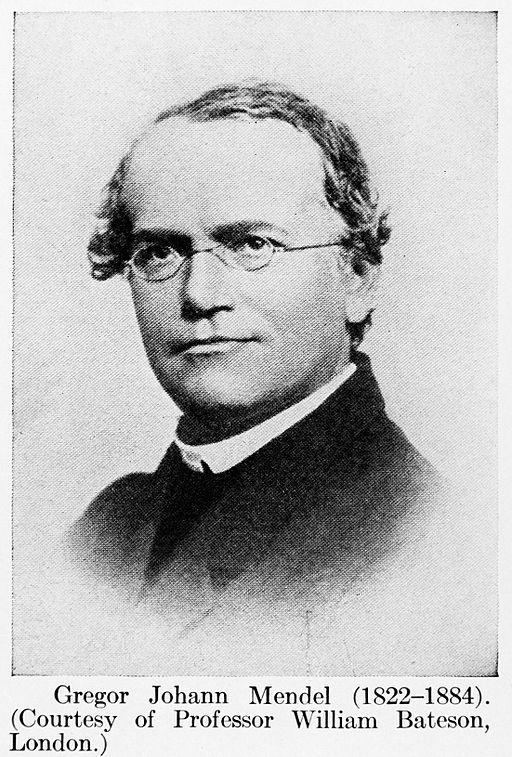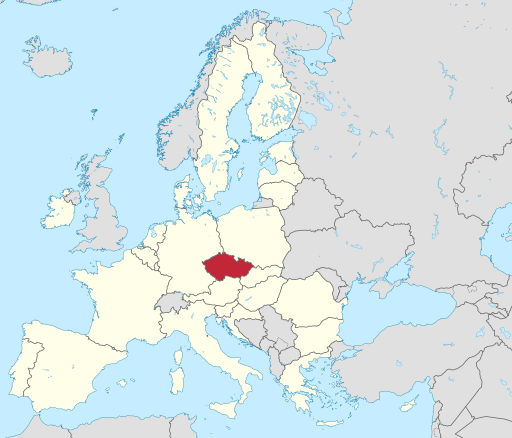Gregor Mendel

Gregor Mendel, shown in Figure 1, is sometimes referred to as the father of genetics. He was one of the first researchers to use mathematics to systematically study patterns of inheritance, and his conclusions form the basis of our modern understanding of heredity.
Mendel has an interesting biography that demonstrates the importance of a scientific community with scientists from diverse backgrounds[1]. Science is meant to be impartial, and when we discuss the scientific method we often assume that a scientist’s background is irrelevant because data analysis should be objective.
However, a person’s background, identity, and experiences have a profound effect on the kinds of research questions they choose to pursue and the tools they choose for analysis. Their place in the scientific community also can impact how their work is considered by other scientists. Mendel’s story demonstrates both the importance of diversity in science and the consequence of overlooking those perceived to be outsiders.
Mendel was essentially the 19th century equivalent of a first-generation college student, coming from a farming family with minimal formal education. He struggled to pay for school among wealthier classmates. He attempted (and failed at!) several jobs before finding his way to the discovery that forms the foundation of classical genetics. And then no one paid any attention to his discoveries for decades because he was very much an outsider to the scientific community. But it was the exact parts of his “outsider identity” that made it possible for him to make these discoveries. His identity drove his scientific curiosity, his approaches to research, and his ability to draw conclusions from his observations. In bringing his own unique experiences to spaces where his background was not common, he was able to make unique discoveries.

Mendel lived from 1822-1884 in what is now the Czech Republic (Figure 2). Mendel was not a geneticist by training – genetics didn’t even exist back then. He also did not set out to discover the laws of heredity. Mendel grew up on a family farm, lived in a farming community, and had a much more practical interest: crop production.
Mendel’s local village did not have many educational opportunities, but after showing promise in early studies in a local grammar school and nearby gymnasium (secondary school), Mendel was sent to pursue more advanced studies in physics and philosophy at the University of Olmütz. Unlike many of his wealthier classmates, Mendel worked to earn the money to pay his way through school (both gymnasium and university). Mendel, by many accounts, was recognized as very smart but struggled in his academic career. At several points Mendel needed to take time off from his schooling to recover from health problems, likely exacerbated by overwork as he juggled jobs and schooling.
After the University of Olmütz, Mendel joined an Augustinian monastery in what is now Brno, in the Czech Republic (shown in Figure 3). The monastery’s mission as a community and cultural center in Brno meant that many of the monks contributed to the community through teaching or medicine. Here, again, Mendel struggled.

Mendel first trained as parish priest. As part of such a position, Mendel would be expected to minister to the ill or infirm. However, he found he was not suited to such a role as he often became physically ill after working with suffering parishioners. The medicine part was not for him. Later, Mendel trained – and practiced – as a teacher. But Mendel failed the final licensure to become a teacher.
Despite this, the abbot of the monastery recognized Mendel’s potential. He recommended that Mendel attend the University of Vienna to fill in the gaps in his education that were revealed by the licensure exams. In 1851, Mendel was sent to the University of Vienna to further his training.
At the University of Vienna, Mendel studied with two mentors who particularly influenced his future thinking: The first was Christian Doppler, who used mathematics to explain natural phenomena. (Doppler is most well-known for his work on the Doppler effect, which describes how the perception of sound waves change when the source of a sound moves toward or away from the listener.) Mendel’s second mentor was Franz Unger, a botanist who applied the laws of physics and chemistry to studying plants. This kind of cross-disciplinary training would ultimately be exactly what brought Mendel to his work with plants and heredity.
When Mendel returned to the monastery after his studies at the University of Vienna, he resumed his teaching career. However, he also began a carefully controlled series of experiments on pea plants, intended to study the inheritance of traits in hybrid crops. Why hybrids? Remember that Mendel lived in a farming community. Because of his background and the role the monastery played in the agrarian community of Brno, Mendel was interested serving his community by studying a phenomenon called hybrid vigor. At the time of Mendel’s work, farmers had long been aware that when two different strains of crops are crossed, the resulting offspring (called a hybrid of the two parents) often are more vigorous – with larger fruits and healthier plants – than either of the parents. But hybrid plants rarely breed true: the offspring of two hybrid plants do not always share that vigor. He approached this problem with the intention of improving crop production.
Mendel’s family upbringing, combined with his role at the monastery, gave him the insight, motivation, and resources to ask these research questions. In his work, he also applied lessons he learned from his education in physics, chemistry, and mathematics. His family, his education, his interests, and his vocation all converged, perfectly positioning him to discover rules of heredity.
So what information did Mendel start with? At the time Mendel began his work, scientists had only a limited understanding of how traits were passed from generation to generation, from parent to offspring. Biologists understood that offspring tend to look more like their biological parents than unrelated adults. They also knew that some characteristics (such as the size or color of fruit, or the length or color of a dog’s coat) varied between individuals, and that crops and animals could be carefully bred to select for the most favorable traits.
One early hypothesis of how traits were passed from parent to offspring was that offspring had characteristics that blended those of the parents: a tall parent and a short parent might produce medium-height offspring, for example. And, in many individual cases, characteristics do appear to be inherited in this fashion: a tall and a short parent might have a medium-height child. However, there are also many examples where offspring do not show blending of parental characteristics; for example, a child of a brown-eyed parent and a blue-eyed parent will often have brown eyes, not an intermediate color halfway between brown and blue. Mendel recognized that hybrid vigor also ran counter to the blending hypothesis.
Through a series of carefully designed, carefully analyzed experiments, Mendel proposed two basic “laws” of heredity: one hundred and fifty years later, geneticists still use these laws as a foundation in understanding genetics. Mendel published his work in a paper titled, “Experiments on Plant Hybridization.”
However, in part due to Mendel’s role outside the scientific community, Mendel’s work received very little attention. His paper was largely ignored until it was “rediscovered” in the early 1900’s, stalling work on genetics for forty years and illustrating the consequences when established scientists ignore the work of outsiders.
Media Attributions
- Gregor Johann Mendel © Wikipedia is licensed under a CC0 (Creative Commons Zero) license
- Czech Republic © Wikipedia is licensed under a CC0 (Creative Commons Zero) license
- St. Thomas’s Abbey © Wikipedia is licensed under a CC0 (Creative Commons Zero) license
- Corcos, Alain F., M., Floyd V. Gregor Mendel’s Experiments on Plant Hybrids: A Guided Study. (Rutgers University Press, 1993). ↵

